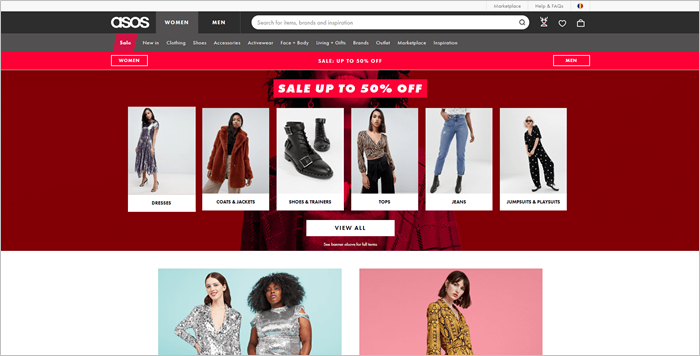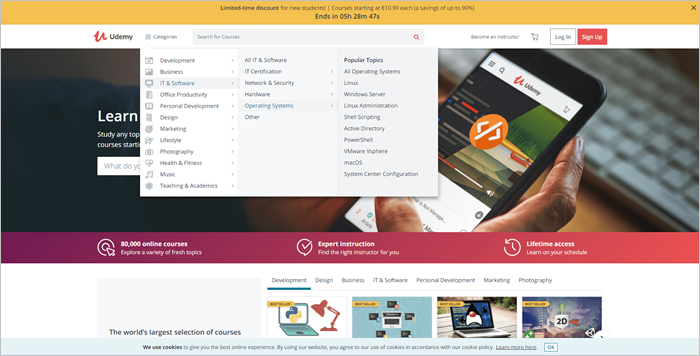“We will not succeed in navigating the complex environment of the future by peering into a rear-view mirror. To do so, we would be out of our minds.”
Sir Ken Robinson in Out of Our Minds: Learning to Be Creative
As we can all clearly see, the year 2018 has witnessed an amazing evolution in user experience (UX) design and the same is expected in 2019. Digital design has been improving constantly over the last few years, and new updates are being introduced to enhance the overall user experience.
Digital design is not only about creating beautiful websites, but also providing better functionality and usability to meet the evolving demands of our online shoppers.
Users want things to be visually appealing, but not at the price of complex functionality. Luckily, UX design is all about delivering easy and interactive websites with advanced functionality, thereby providing a simple and seamless user experience.
Since 1995, the year when both Amazon and eBay sold their first items, we’ve come a very long way with the look and feel of eCommerce sites. It’s easy to look at the internet today and forget just how far eCommerce has come.
Over the years, the standard for UX in eCommerce has become more sophisticated and slicker, and the year to come will see this continue. We expect 2019 to be a year of exciting design changes. Here are a few design and tech trends we anticipate in the year to come.
1.Design Trends
UX design trends foster innovation that will grow business. The eCommerce world has been growing immensely popular and UX design plays a vital role in increasing customer retention and growth.
Visual depth
In 2018 we saw the return of depth after the slow fade of flat design. We can assume that 2019 will continue this trend with the use of shadows, parallax scrolling, and grids.
The effect of shadows increases the aesthetic appeal of your web presence and will also boost your UX by providing emphasis. In addition, this technique will enhance your CTAs. Designers have been using subtle and soft shadows for a long time, but now we can combine them with vibrant color gradients and enhance this effect.

Simpler navigation
Navigation is meant to help the online shopper find and buy the desired product faster and more easily. Every designer has always had the goal of making navigation simpler. Lately, more and more brands are choosing sticky tab-based menus to increase navigation efficiency and time on site.
Sticky navigation is becoming more prominent, with menu elements at the top, bottom or side of the page. This will help your customer by enabling instant access to different parts of the site.

Content-focused design
A good strategy for gaining quality website traffic in 2019 is a content-focused approach. The conventional way is to create a website and then somehow fill it with content.
A content-focused approach implies that the product designer needs to see the content first before any design happens. As far as context is concerned, we’re at a point that is far beyond individual devices. Focusing on content helps a business build trust with its clients by creating a great website that beautifully suits the products, niche, and messages.
Bonus: Here are even more 2019 trends and predictions regarding digital commerce!
Mobile-first design
We’re all already aware of the rising use of mobile devices and smartphones in eCommerce. Mobile devices have turned out to be the primary method for browsing the internet, and users expect every website to have a responsive design.
Mobile-first design describes the approach of designing a website for mobile devices before considering its accessibility for large-screened devices. Initiating websites with a mobile-first approach has become a necessity for store owners.
In the year to come, we expect that easy-to-use dedicated apps and mobile websites will be more and more popular amongst the online customers, so it’s vital that site design continue to prioritize mobile.
2.Technology Trends
The technology that powers eCommerce developed at a rapid pace in 2018. With notable technological advancements that once sounded like science fiction leading the way, we can expect some monumental changes in the coming year.
Personalization
Although personalization isn’t a new concept, the conditions are perfect for improving it. Online shoppers are open to more personalization, and marketers have the advanced tools to make it happen. With effective personalization, eCommerce websites can offer each customer exactly what they want, at the right time, on their favored platform and at the right price.
Building a personalized user experience with the help of machine learning, data analysis, and AI makes journeys throughout the web convenient and intuitive.
Voice search
Recent studies show that at least 30% of searches will be done without a screen by 2020, thanks to the many voice assistants available. You may have heard of them. They have names like Alexa, Siri, Cortana, and Google Assistant. If you’re one of the lucky few who’s become an early adopter, then you’re probably starting to reap the benefits already.
It may look as if voice technology is still in a relatively early stage; however, the number of people using these services is increasing every day. Our goal is to help visitors get a great shopping experience at the pace they adopt technologies and change behavior.
Gestures
Gestures will soon replace current on-screen buttons to navigate on most gadgets. So, when designing your eCommerce website or app, focus on the products that meet customers’ need to swipe up, down, to the side, long and so on.
Site performance
Site performance monitoring might also become an important marketing technique in 2019. To perform well, eCommerce websites will have to load fast, requiring progressive web apps and accelerated mobile pages.
“According to Google, the average time it takes for a mobile landing page to load is now 22 seconds […] Compare that with the three seconds visitors need to decide if they want to stay for your page to load. People are impatient. They want something, and they want it now. While page speed is important for your SEO, it is even more important for your UX, conversion, and general customer happiness,” wrote Edwin Toonen in an April 2017 article for Yoast.
Faster payments and simplified checkout process
Fast, simple and secure checkout has always been a primary desire for online customers. Among the benefits you can experience when improving the checkout process are lowering cart abandonment, reducing cart drop rate and creating a positive experience for online customers while shopping.
An online business is dedicated to your online customers. The key purpose behind all the online developing efforts is to make the customer journey easier and better.
Those of us who quickly adapt to the customers’ demands shall win in 2019 and beyond.





